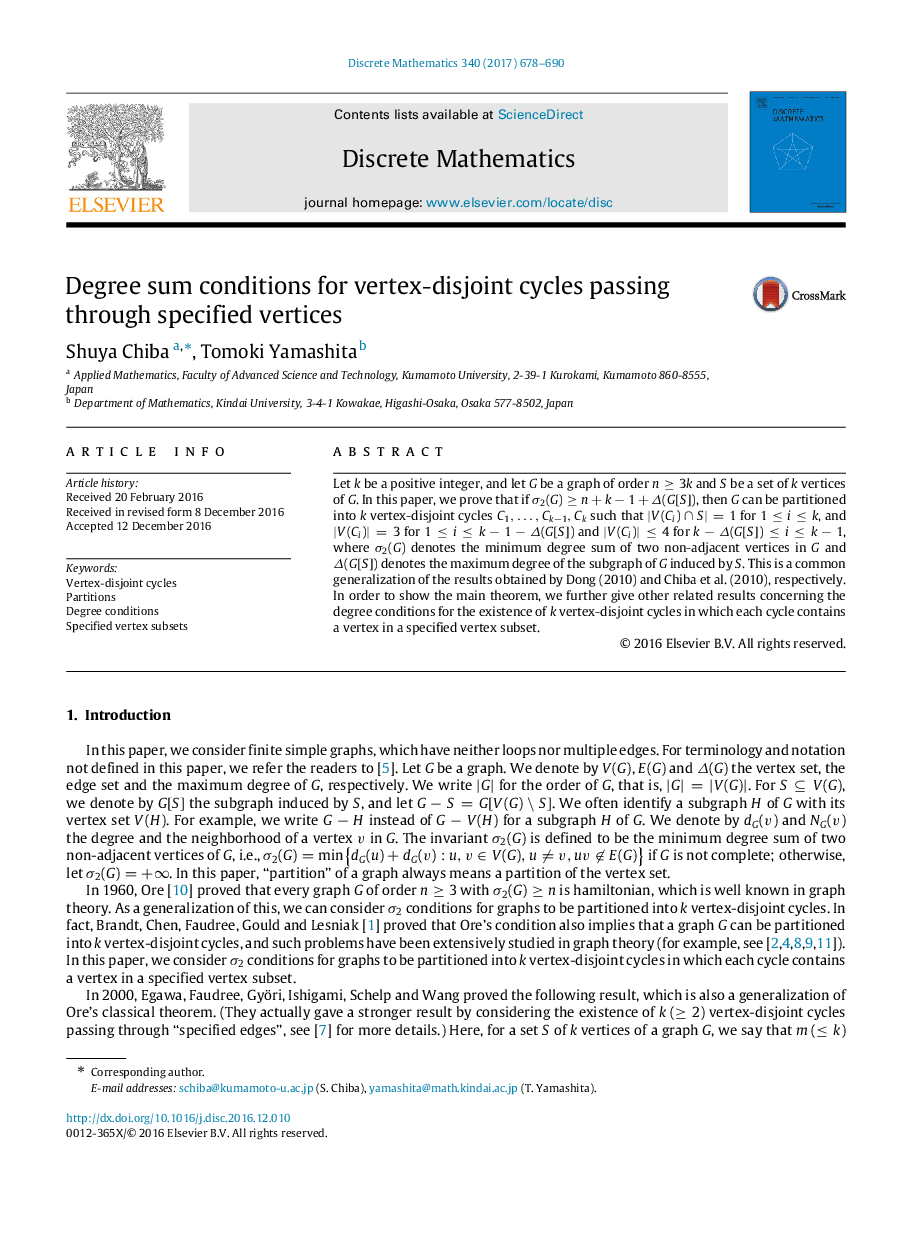| Article ID | Journal | Published Year | Pages | File Type |
|---|---|---|---|---|
| 5776948 | Discrete Mathematics | 2017 | 13 Pages |
Abstract
Let k be a positive integer, and let G be a graph of order nâ¥3k and S be a set of k vertices of G. In this paper, we prove that if Ï2(G)â¥n+kâ1+Î(G[S]), then G can be partitioned into k vertex-disjoint cycles C1,â¦,Ckâ1,Ck such that |V(Ci)â©S|=1 for 1â¤iâ¤k, and |V(Ci)|=3 for 1â¤iâ¤kâ1âÎ(G[S]) and |V(Ci)|â¤4 for kâÎ(G[S])â¤iâ¤kâ1, where Ï2(G) denotes the minimum degree sum of two non-adjacent vertices in G and Î(G[S]) denotes the maximum degree of the subgraph of G induced by S. This is a common generalization of the results obtained by Dong (2010) and Chiba et al. (2010), respectively. In order to show the main theorem, we further give other related results concerning the degree conditions for the existence of k vertex-disjoint cycles in which each cycle contains a vertex in a specified vertex subset.
Related Topics
Physical Sciences and Engineering
Mathematics
Discrete Mathematics and Combinatorics
Authors
Shuya Chiba, Tomoki Yamashita,
